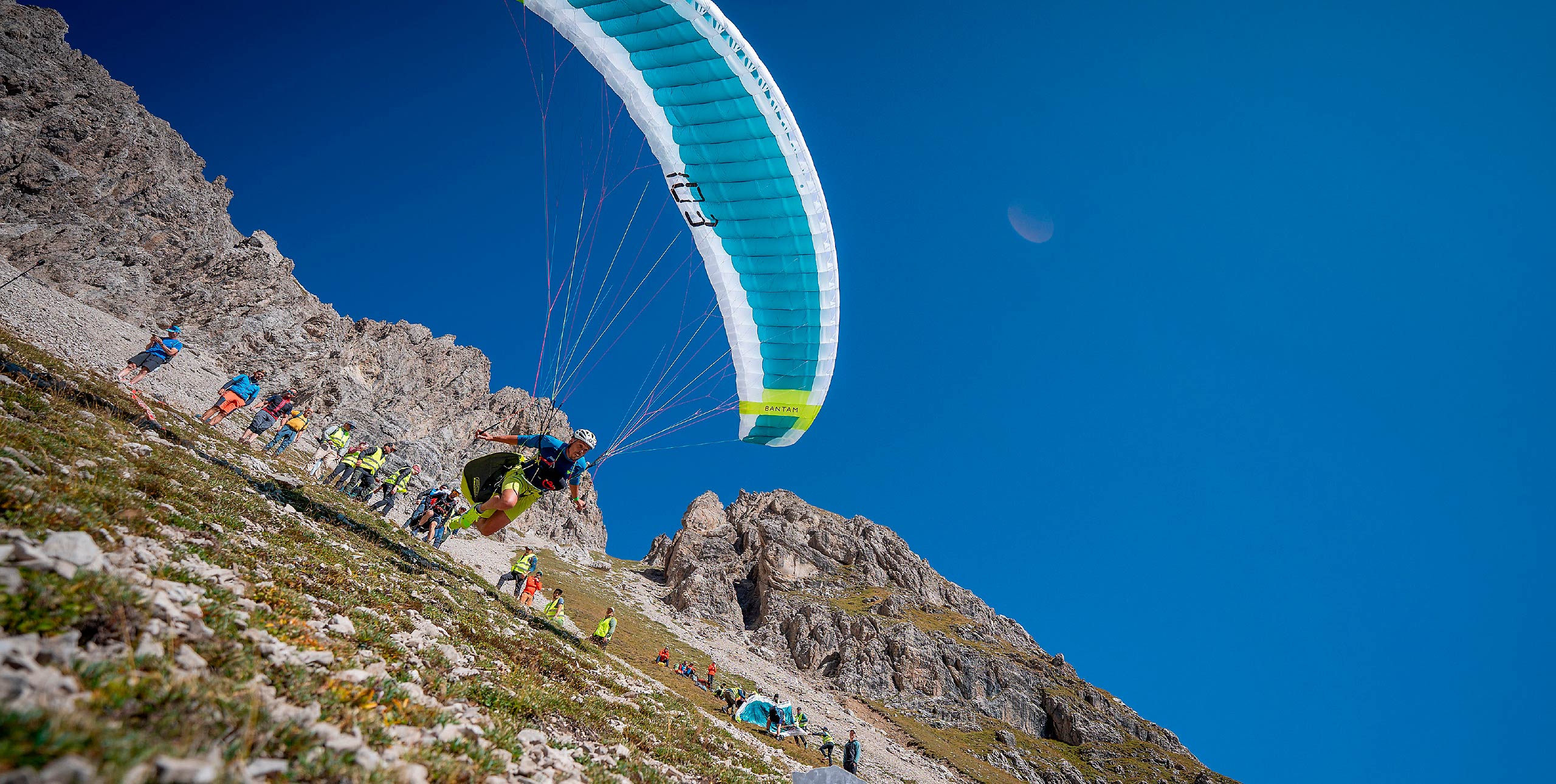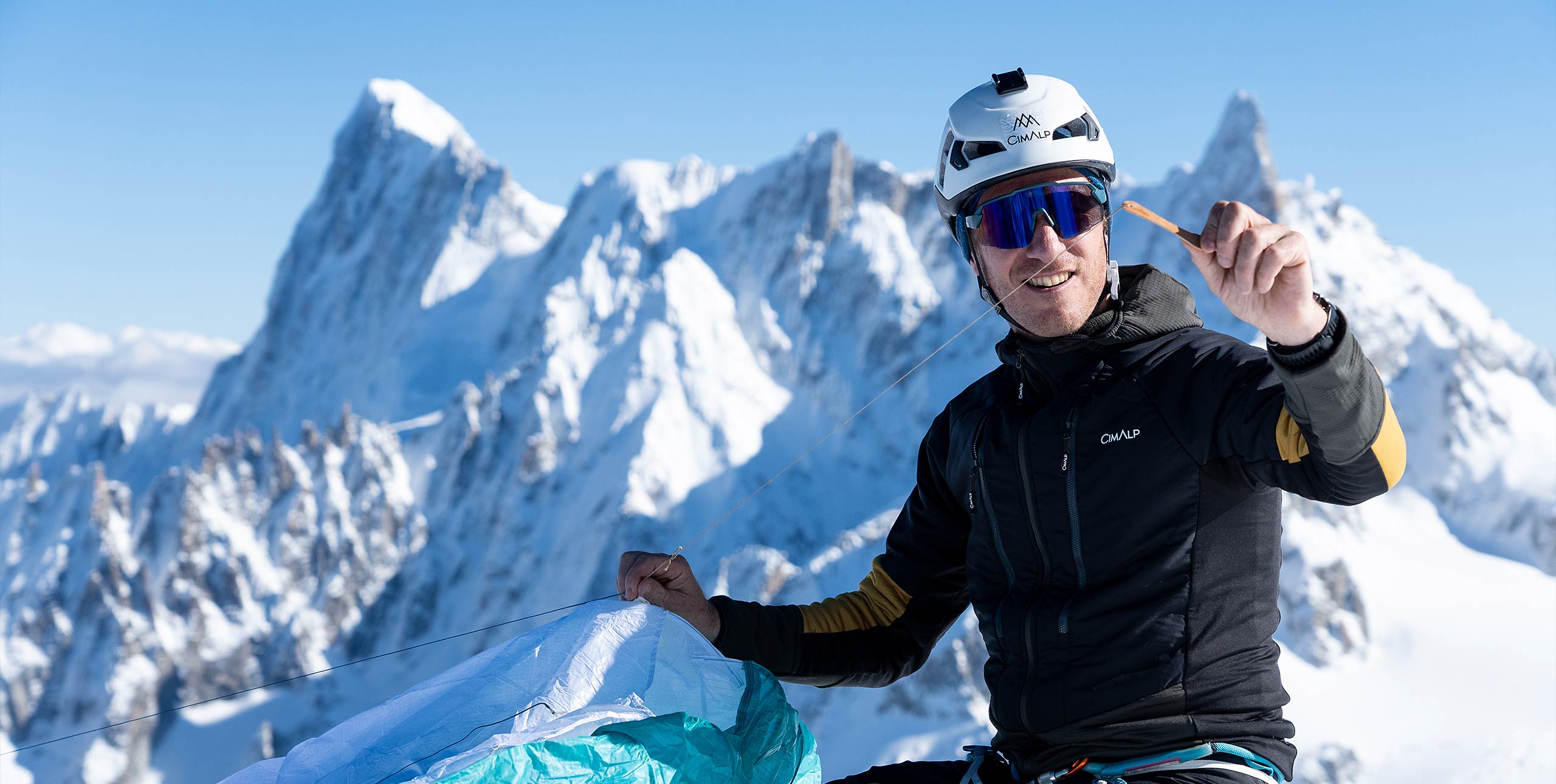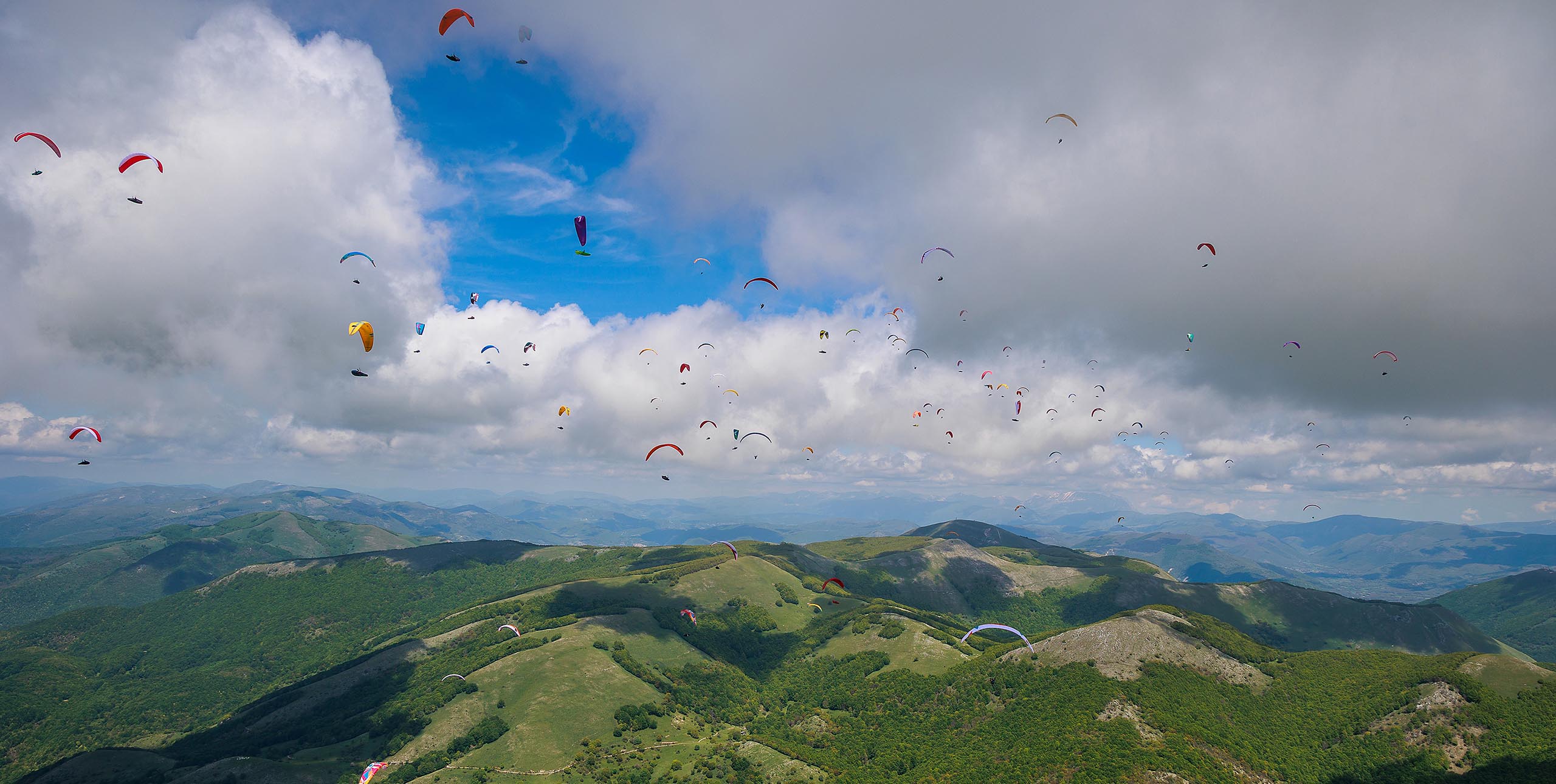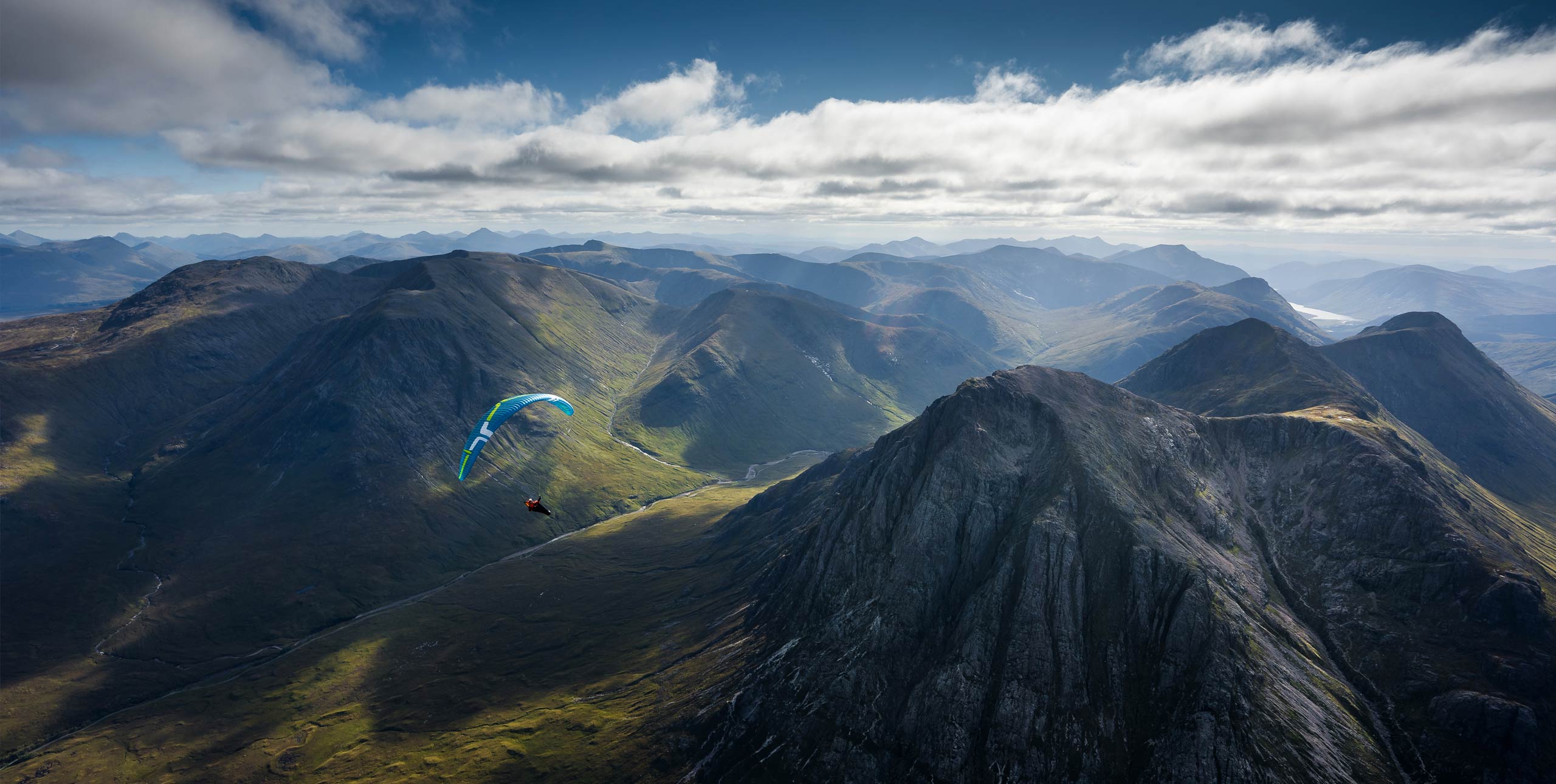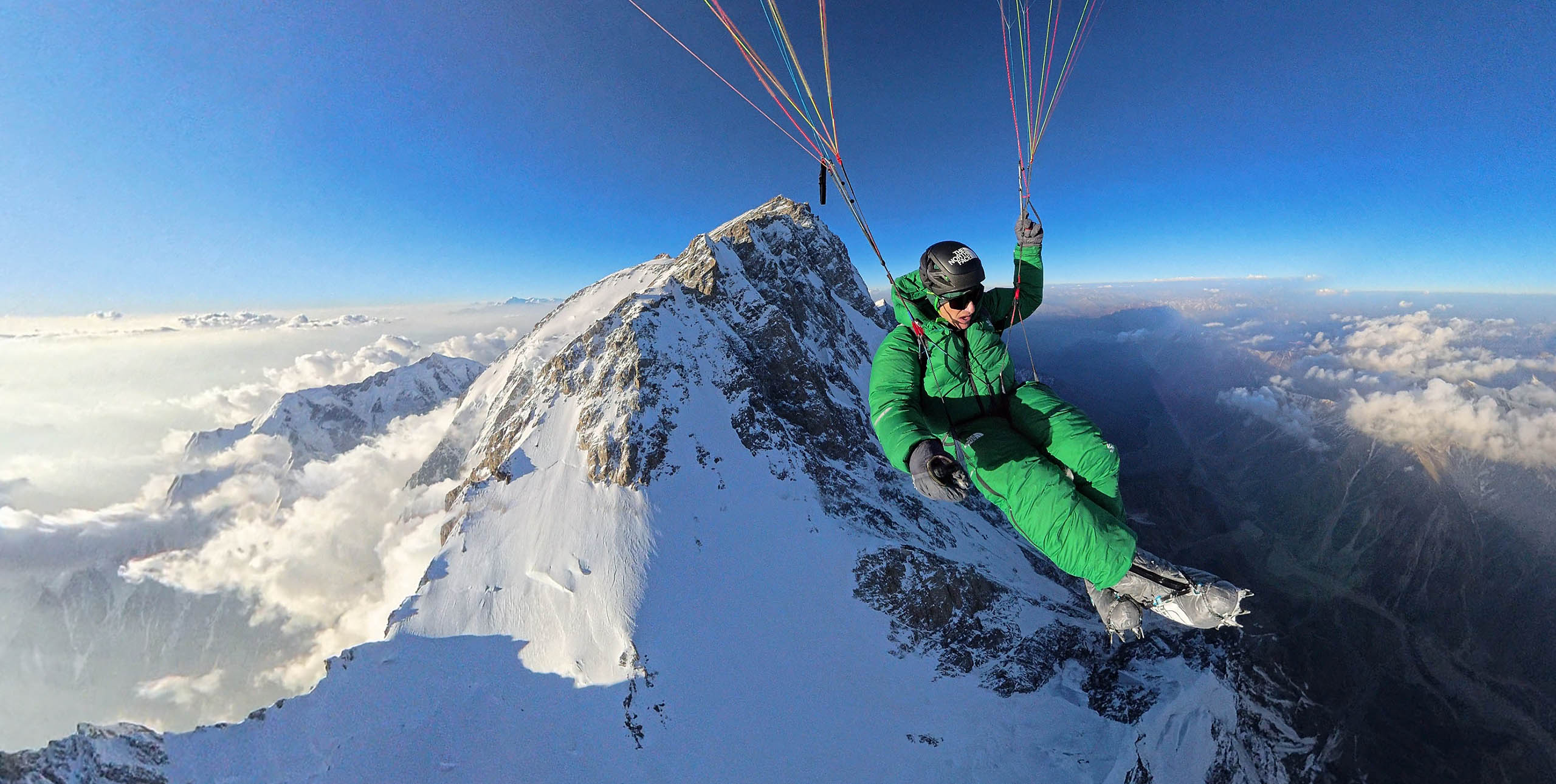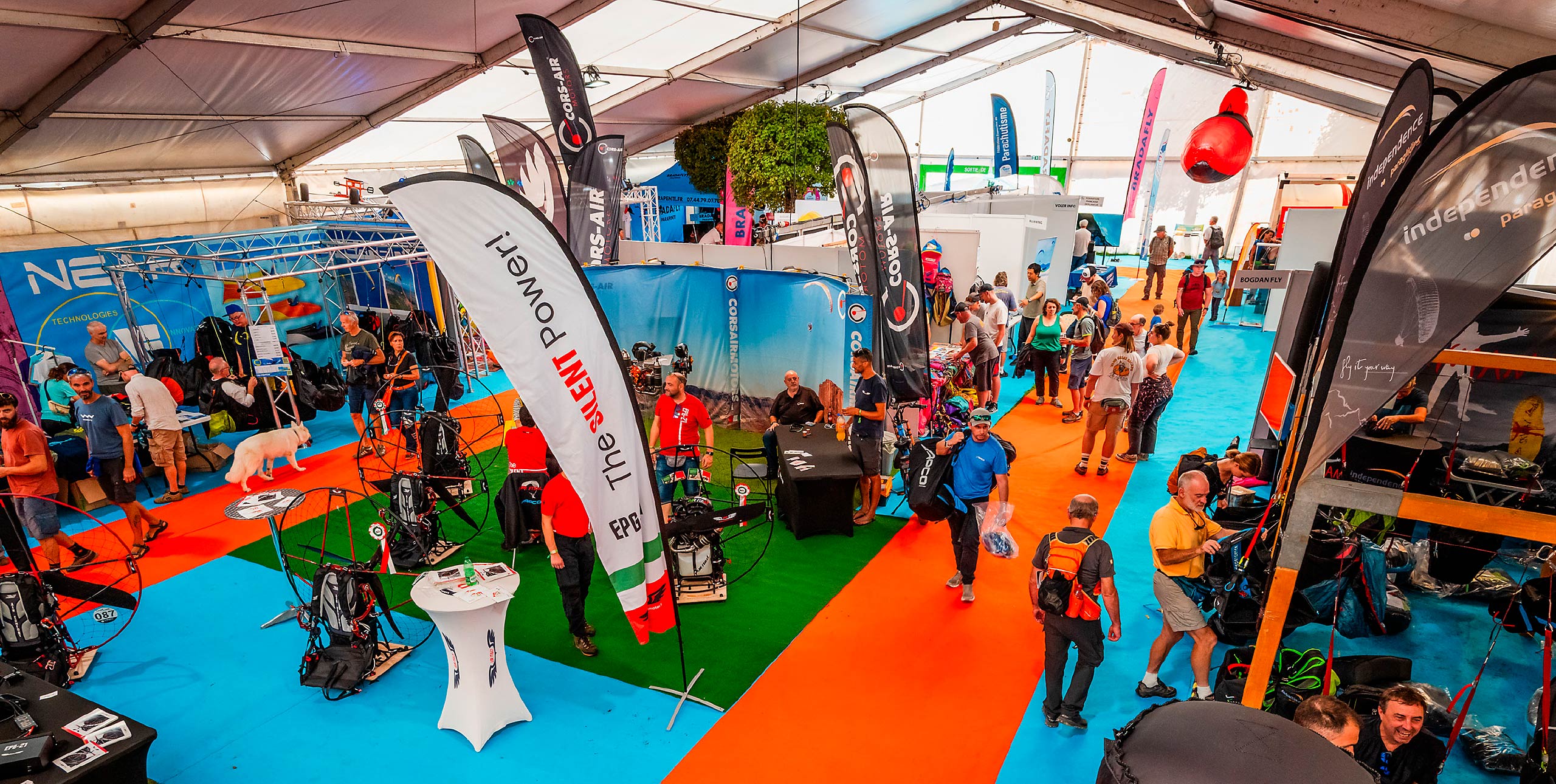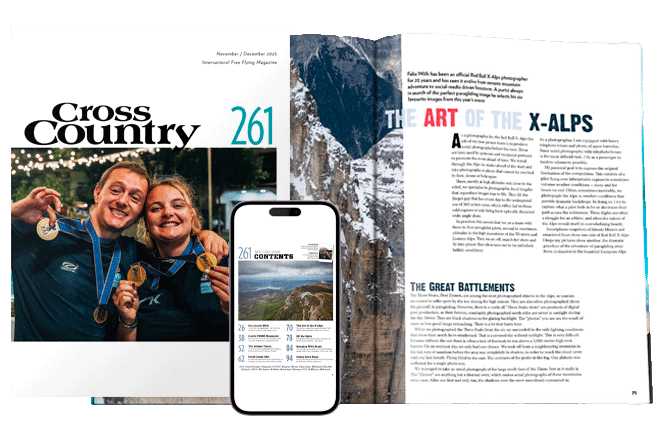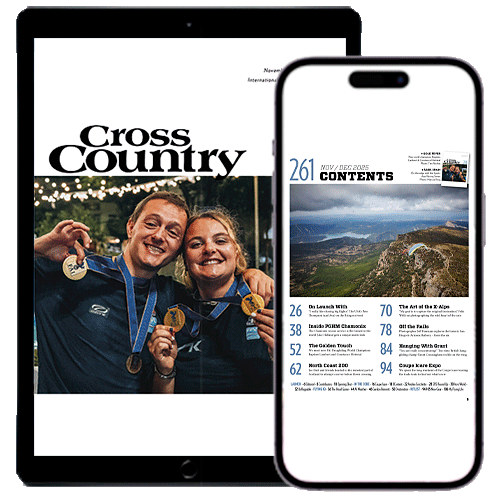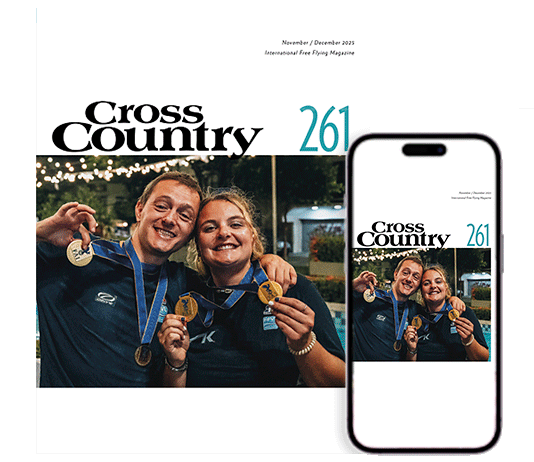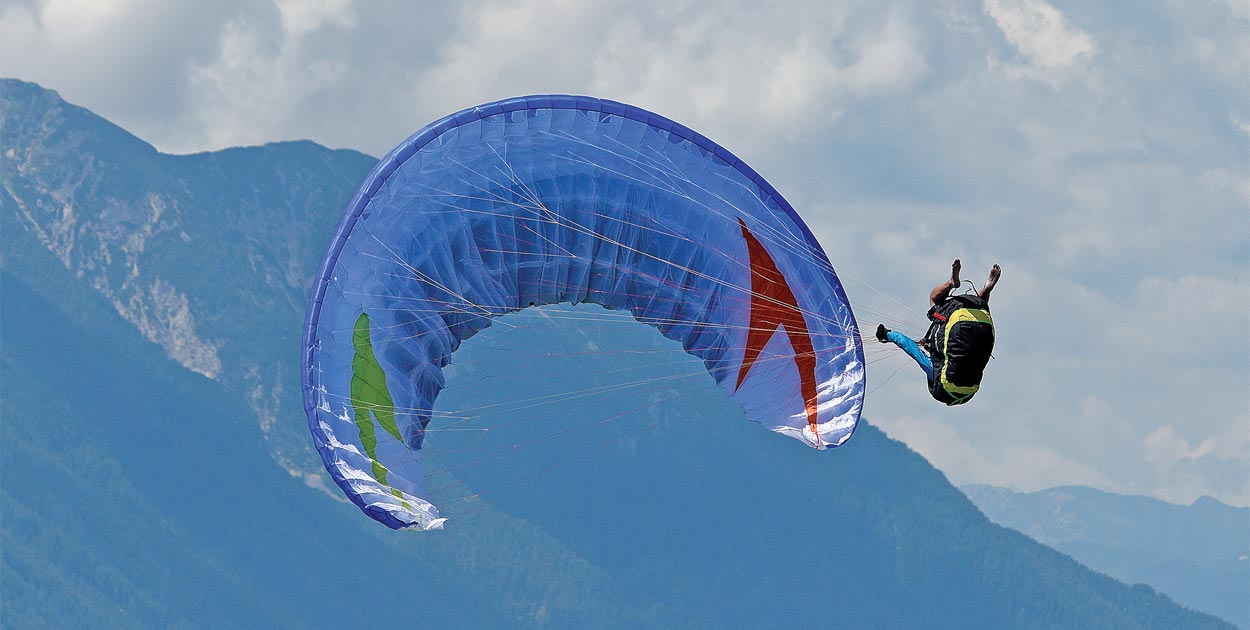
Knowing the subtleties of when and how to use the brakes is an important factor in what separates a good pilot from the crowd. Let’s look at some of the finer details.
From Bruce Goldsmith’s Icaristics column, Cross Country 174 (October 2016)
Certification
If you apply too much brake to a paraglider it will stall. Because of this simple fact the brake range of a glider is closely linked to its level of certification. A minimum required range is defined for each class of paraglider.
For a medium-sized wing the symmetric brake travel should be:
- EN A and B: 60cm
- EN C: 45-60cm
- EN D: 35-45cm
Larger wings (over 105kg) should have 5cm more travel and smaller sizes (less than 80kg) can have 5cm less travel.
These measurements are taken by symmetrically applying both brakes at the same time. If only one brake is applied at a time the brake range achieved will be larger.
It is also important the brake force increases progressively with the deflection of the brakes. Gliders where the brake force decreases, automatically fail the certification outright.
Fast or slow: speed of application
The EN testing standards specify how brakes should be applied: “Over a period of five seconds gradually lower both controls to the symmetric stall position marks, being careful not to induce pitch oscillation.”
These are two very important points. If the brakes are not applied over a period of five seconds then the measured brake range will be different.
If you apply the brakes faster than that, then the range measured will likely be more. If you apply the brakes slower, or hold the brakes for a longer time, then the brake range will be less.
The second point highlighted in the EN certification is the mention of glider oscillations. Whenever you apply the brakes there will be a pitch movement of the glider. The application of the brakes will make the canopy slow down and move behind the pilot.
As the glider/pilot combination is a huge pendulum the next thing that happens is the glider will swing back forwards again. If the pilot holds the brakes in the same position when the canopy is trying to surge forward, they will stall the wing surprisingly easily, even if they only hold the brakes in the same position.
Use all this to your advantage
When doing SIV, or in extreme situations, pilots needs to use as much brake movement as they can to fully control the wing. This means they can use these points about brake travel to their advantage and so get more effective brake travel out of the glider:
- Apply brakes quickly and release them shortly after
- Do not apply the brakes symmetrically (unless you want to stall)
- Do not hold the brakes down at the same position during a pitch oscillation.
- You can apply a lot of brake for a short time, or a little brake for a long time.
A lot of brake applied quickly and for a short time is very effective. When looking at videos frame-by-frame of experienced acro pilots clearing cravats, I have often seen that they use huge control movements with only one brake and hold them for around one second. This gives them enhanced control authority without stalling the wing at all, despite using very large brake deflections.
I also saw myself doing the same thing earlier this season as I entered a dust devil in Chelan. The glider was violently surging and receiving a downdraught on the leading edge that would collapse the wing hugely if no input was made. However, I made a massive brake input that would normally stall the wing, but as I held it for only one second the effect was only positive.
The fast brake movement also helps to pressurise the wing as the air is forced forwards from the back of the wing to the front, helping the glider resist the collapse.
Understanding how to use these tricks to allow greater control movements while also avoiding stalling the wing is one of the keys to becoming a great pilot.
Bruce Goldsmith has been flying since the 1980s. He has been British Hang Gliding Champion twice, British Paragliding Champion three times and was Paragliding World Champion in 2007. He has been designing paragliders for 20 years.


